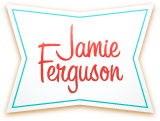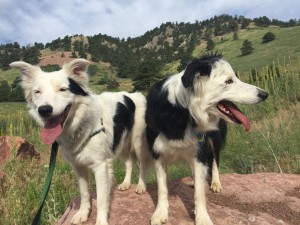Into the depths
To my surprise, I did well on my first homework assignment in the “Advanced Depth” class I’m taking (through WMG Publishing). I was surprised because I procrastinated and did my homework at the last minute.
Sometimes writing things when you’re in a rush is actually a good thing because you don’t have time to think too much, and often what you write is better than if you’d spend a lot of time. And sometimes it’s not. Here’s what I wrote, followed by what I think I did well and what I think it’s missing.
The goal was to write an opening with ‘depth,’ meaning to write something that would grab the reader.
Stella tugged on her long linen skirt, trying to pull it free from the branches of the bush it had gotten tangled in. The warm summer breeze carried the scents of earth and pine, and rustled the leaves of the aspen so that they made a soft, tinkling sound. The full moon cast cool beams of light that shone down through the trees, and shone on the steep, rocky slopes of the mountain peaks that jutted high up above the forest. A strawberry moon, people here in Colorado Territory called it, but to Stella it was la lune rose, the rose moon. Her grandmother used to say this moon was a reminder to take stock of where you were in the year – or in your life, and make sure you were on the right path.
Stella was not on the right path.
Her skirt ripped free and she toppled over onto the forest floor. She pushed herself up and scowled at the trail of fabric leading from what was left of her petticoats to the bush. She’d already ruined her best dress in her headlong dash through this endless forest, but somehow seeing the imported lace ripped to shreds seemed more unforgivable than Don Felippe’s unsuccessful attempt to kidnap her.
She ripped off what was left of the lace of her underskirt, then took a deep breath of mountain air. How long had she been running through the forest? The sun had just been setting when her party was ambushed. The moon was now high in the sky, so it must have been several hours ago. Not that the time mattered much – she had no idea where she was, nor which way to go, whether it was noon or midnight. Out here humans were few and far between, and were more likely to be Indians interested in her scalp – or worse – than anything else.
What’s present
- Described the setting.
- She’s in a forest.
- There are pine and aspen trees in the forest.
- And at least one bush.
- There are mountains nearby.
- Aha! She’s in Colorado Territory
- Since she’s in Colorado Territory, not Colorado, this implies the time is pre-statehood (i.e. pre 1876)
- It’s nighttime.
- It’s summer.
- There’s a warm breeze.
- She’s wearing petticoats, which implies the time is in the past.
- She’s worried about Indians scalping her, implying she’s in the Old West.
- Used sensory details.
- She smells earth and pine.
- She hears the leaves of the aspen rustling.
- She doesn’t taste strawberries, but by using “strawberry moon” the reader can be tricked into thinking there’s taste.
- Ditto for roses – some readers will think of the scent of roses.
- Described the character.
- Stella is lost.
- She’s upset that her best dress, and especially her imported lace petticoats, are ruined.
- She seems more upset about her clothing being ruined than about almost getting kidnapped, although this may be just a moment of annoyance on her part since she clearly didn’t want to be kidnapped.
- She knows who tried to kidnap her.
What’s missing
- More sensory detail.
- I’d like this opening to have at least one more reference to smells.
- Taste too, although that would be a little more challenging given what’s going on in this scene.
- A few more sounds would be good. She could hear her own breath, since she’s presumably been running. She’s only heard the sounds of the breeze rustling aspen leaves, but there might be a few other sounds (crickets, perhaps).
- Touch. There are no references to touch in this section, but she’s touching things. What does her skirt feel like? Is the fabric rough or smooth? Does the lace scratch her? Does the bush poke her? When she topples over, what does she land on? A bed of pine needles? A rock?
- I think there are enough references to sight – sight is usually the easiest sense to cover. But I could consider adding more things, like: is there snow at the tops of the peaks? Does the moonlight glint off a section of rock on the side of the mountain? Can she see any colors in the light of the moon, or is everything kind of gray and silver and black?
- Details about how Stella feels, both physically and emotionally.
- Is she frightened? Confident? She is lost, after all…she should be at least a little nervous. We see some of this in the last sentence, but it’s not yet clear if she’s really afraid or just reviewing the facts of her predicament.
- If she was indeed running until she got snagged by the bush, she’d be breathing fast, possibly out of breath, and her heart would be beating quickly. She might be sweaty – it is a warm night, after all. Her legs might hurt – she probably doesn’t run often. Maybe she’s been scratched by branches during her dash through the forest. Do her feet hurt? Is she hungry? Thirsty?
- Is she worried about whoever else was in the party that was ambushed? Did they escape too?
- Is she angry about the kidnapping attempt? Frightened that Don Felippe is following her?
- General stuff
- Is Stella French? Part French? Was her grandmother French? We don’t need to know her life story at this point, but my intent had been to imply that her grandmother was French, and I don’t think that’s clear yet.
Adding the missing details isn’t a huge amount of effort, although it probably looks like it from my list. And they don’t all need to be added. I’ve worked on scenes or paragraphs where I wanted to put in a reference to smells or sounds or some fact, but was unable to find a way to add that information without detracting from the text.
There are two general guidelines I follow when starting a story, and they often apply to chapter openings and new scenes.
- Have a character in a setting with a problem.
- Have some form of action.
These are guidelines, not rules. There are lots of good stories that don’t start with action, and plenty of others which don’t have a character with a problem, and so on. What I do is try to incorporate both of these elements in an opening, and if there’s some reason why one or both of them are not needed, then I’m consciously aware that I’m making a choice about what to include. But I do like to consider these guidelines because I occasionally find myself thinking something doesn’t work, then I realize I’ve done something like start a story with a character who doesn’t have a problem soon enough, and is therefore less compelling. These guidelines are reminders to me about things that I typically find helpful in my own writing.
With this opening, I have both. Stella is in a forest in the Old West, and she’s lost so she definitely has a problem. (If she gets out of the forest, she’ll have another problem because Don Felippe will presumably try to kidnap her again.) There’s action at the start because she’s pulling her skirt free from the bush. I could have started with her standing still (no action), but I generally like having some action – even if it’s trivial – because I find it helps pull the reader into the story.
There are different types of writers. Some do one draft, edit, and publish. Some write way more than they need, then chop it out. I tend to write sparse first drafts, with occasional chunks of detail if there’s a scene or chapter that is more fleshed out in my mind, then I add more details later. I think of it as working with a sculpture where I’ve created the basic form, then spend time adding/removing clay here or there until I get exactly what I want. This approach does not work for everyone, but it works well for me. The details I put in the lists above are what I’d do if this weren’t a homework assignment, although I would go through them mentally and not write them down like I did here. At most, if there was something I wanted to come back to I’d make a comment in my Word doc, like perhaps “don’t forget to describe the fabric of her skirt – is it rough? Smooth?”
Stella is the ‘Stella’ I reference on my In the Works page. I don’t know if I’ll keep this scene when I get to that project, but I suspect I will. I want to know what she does about Don Felippe!

